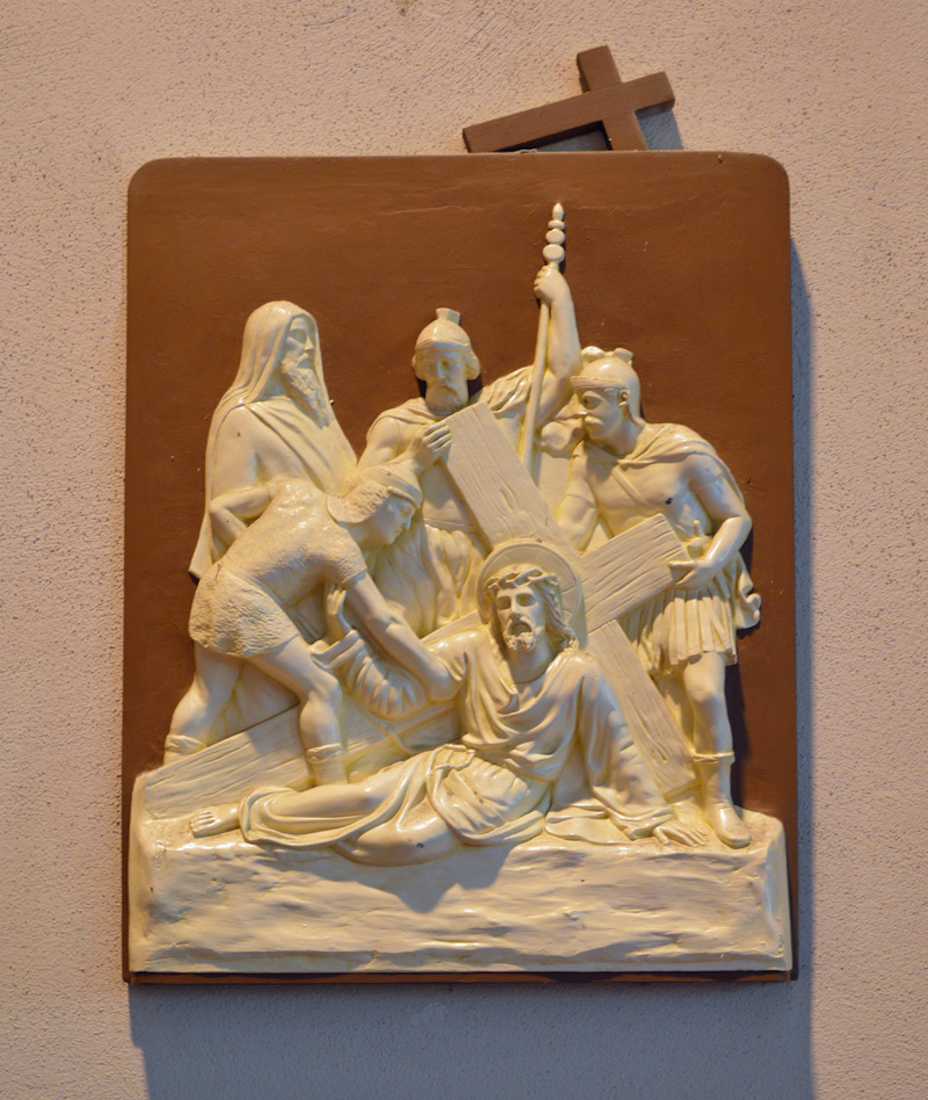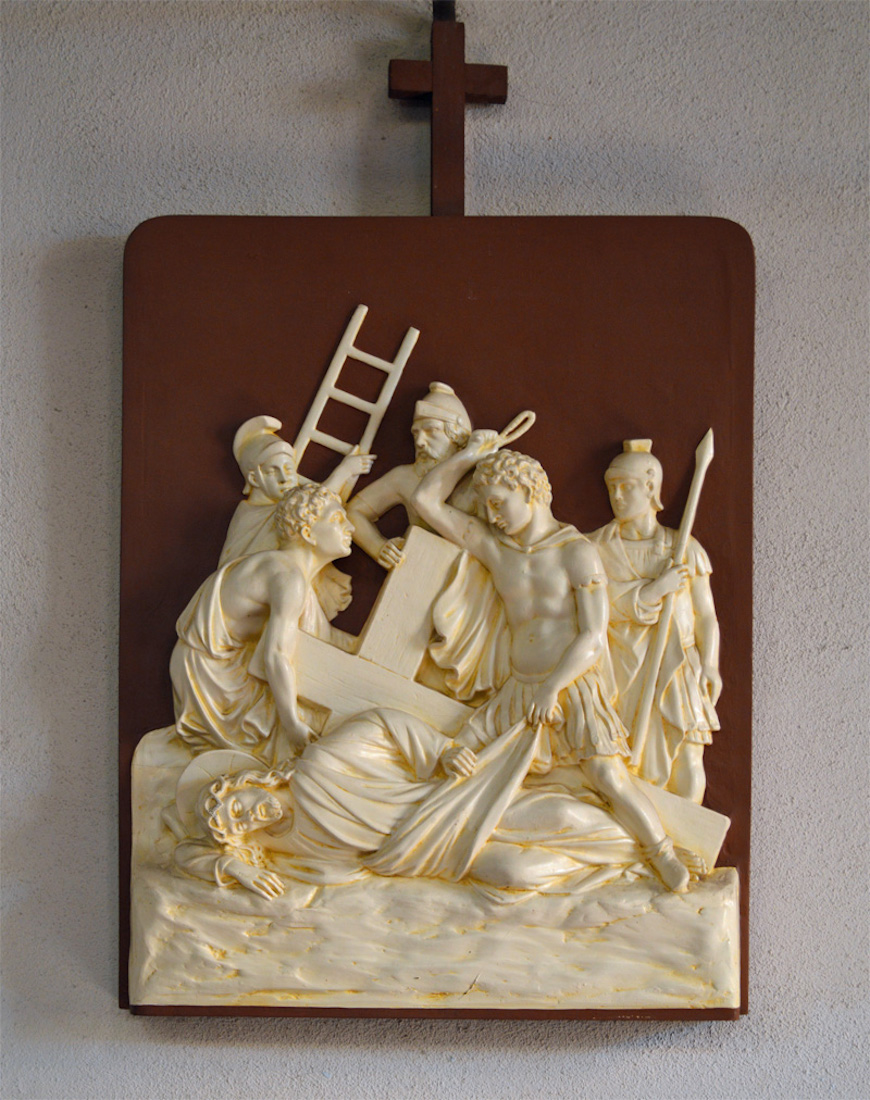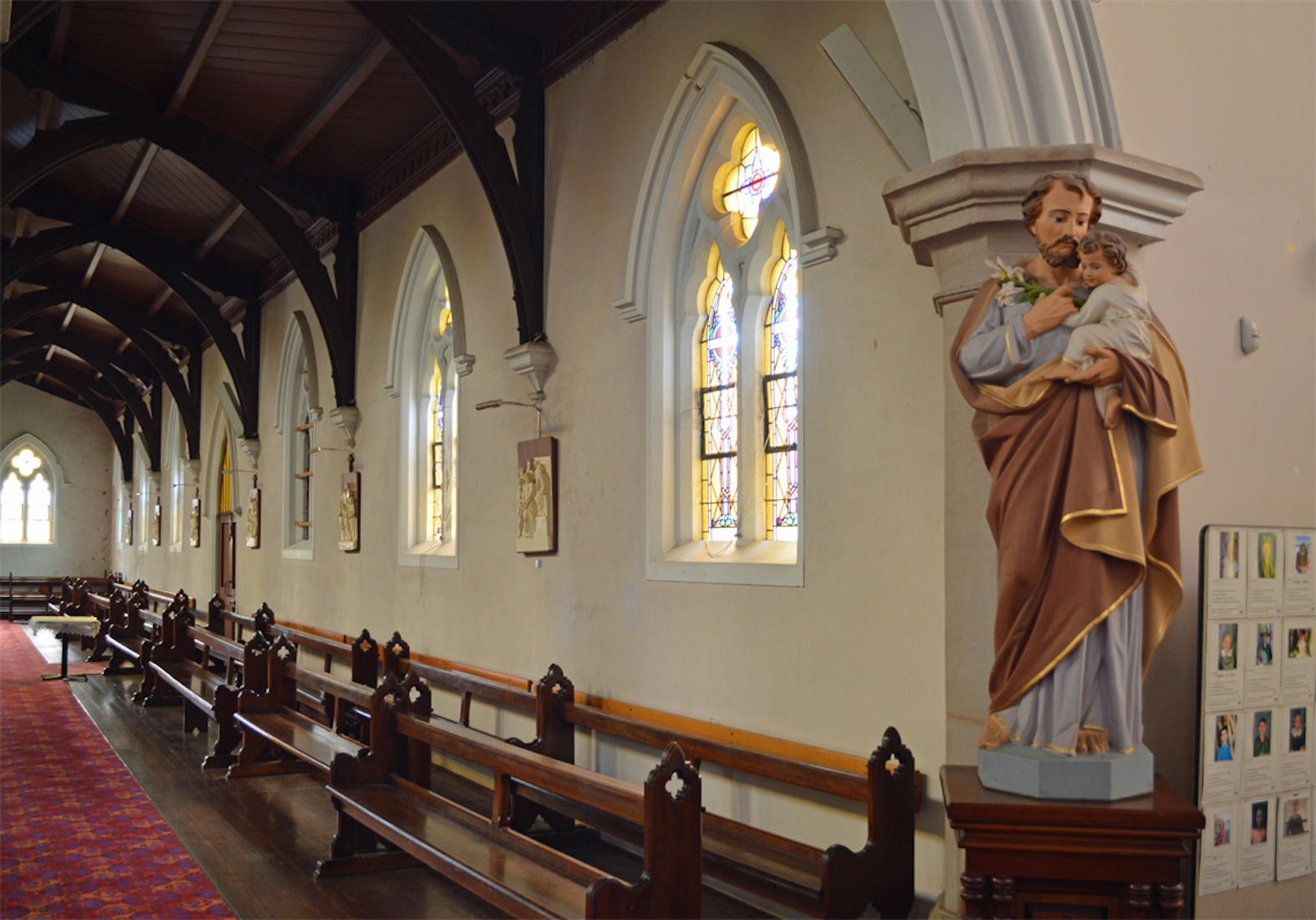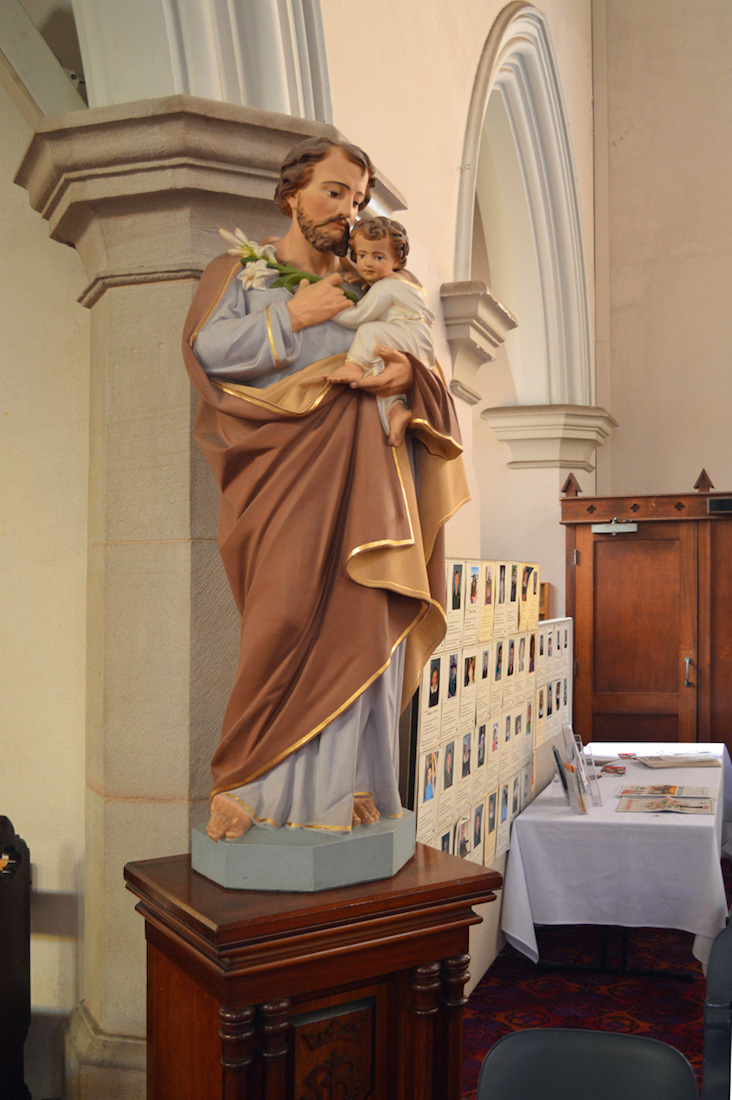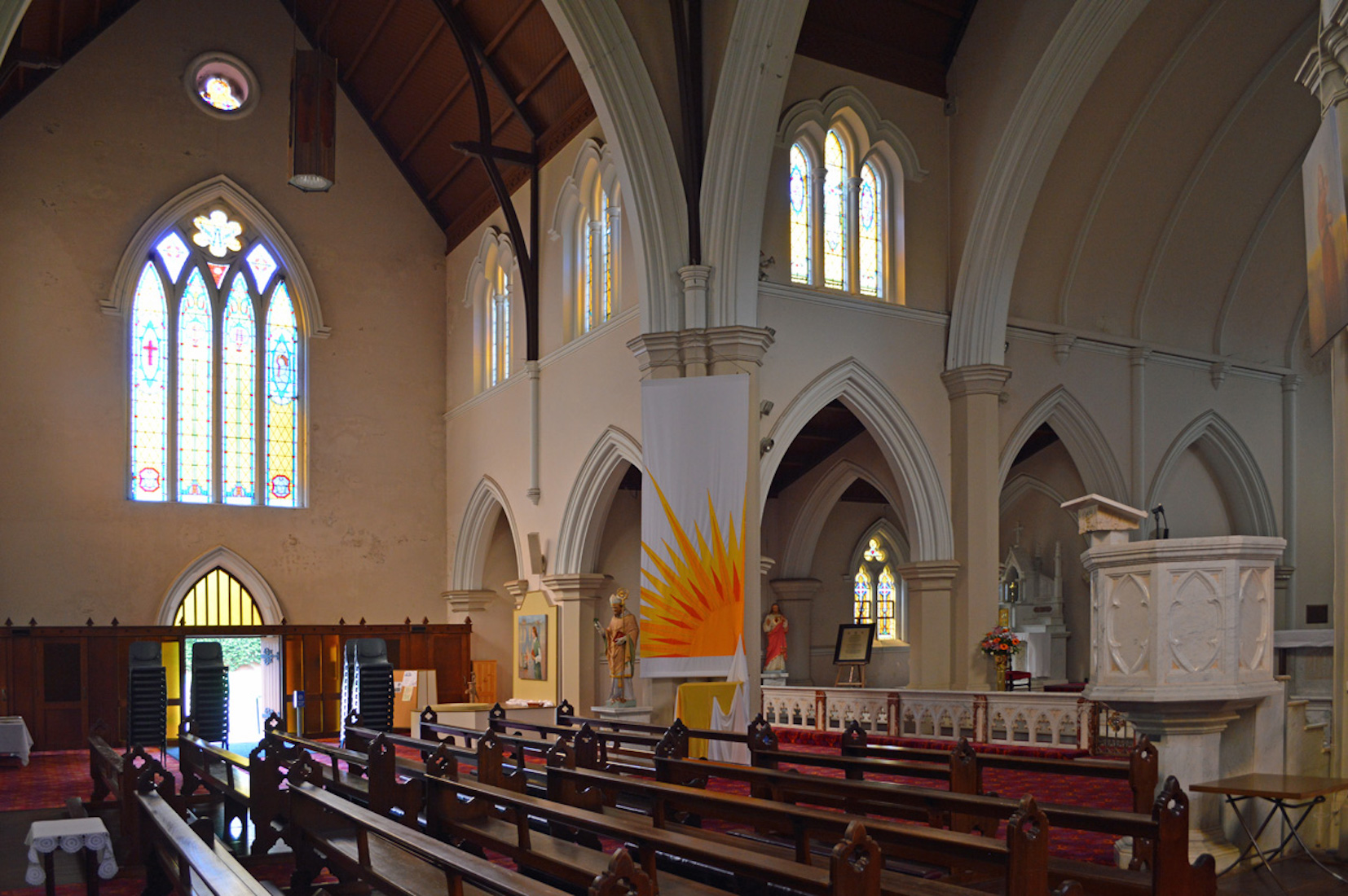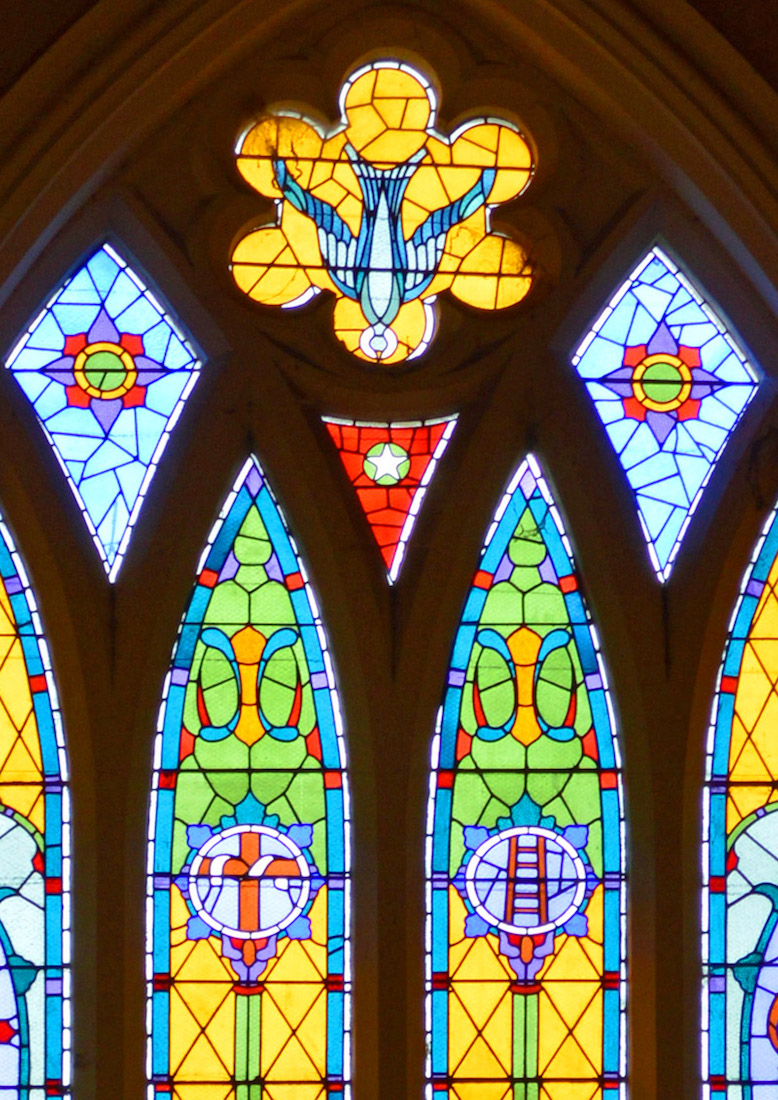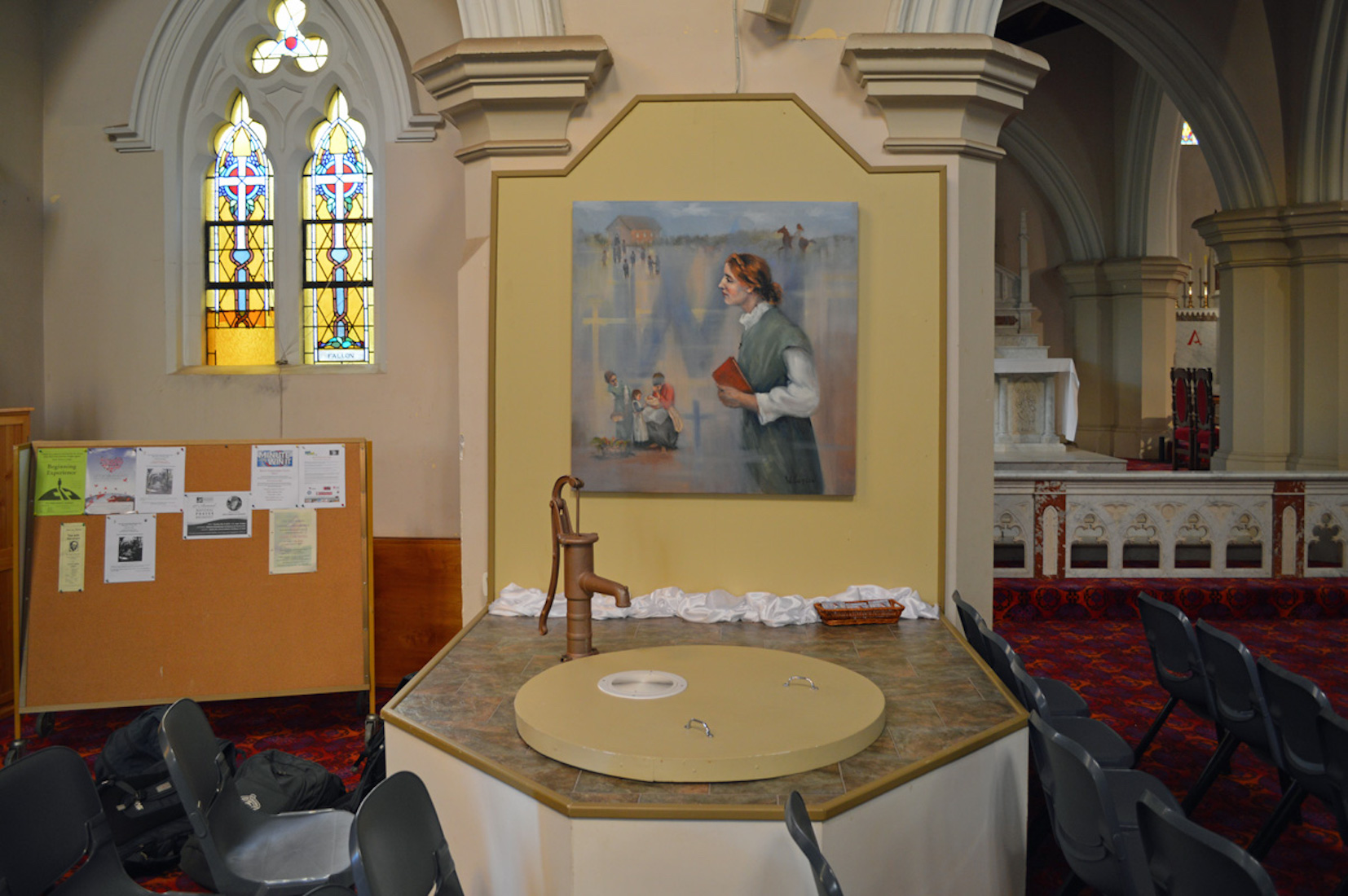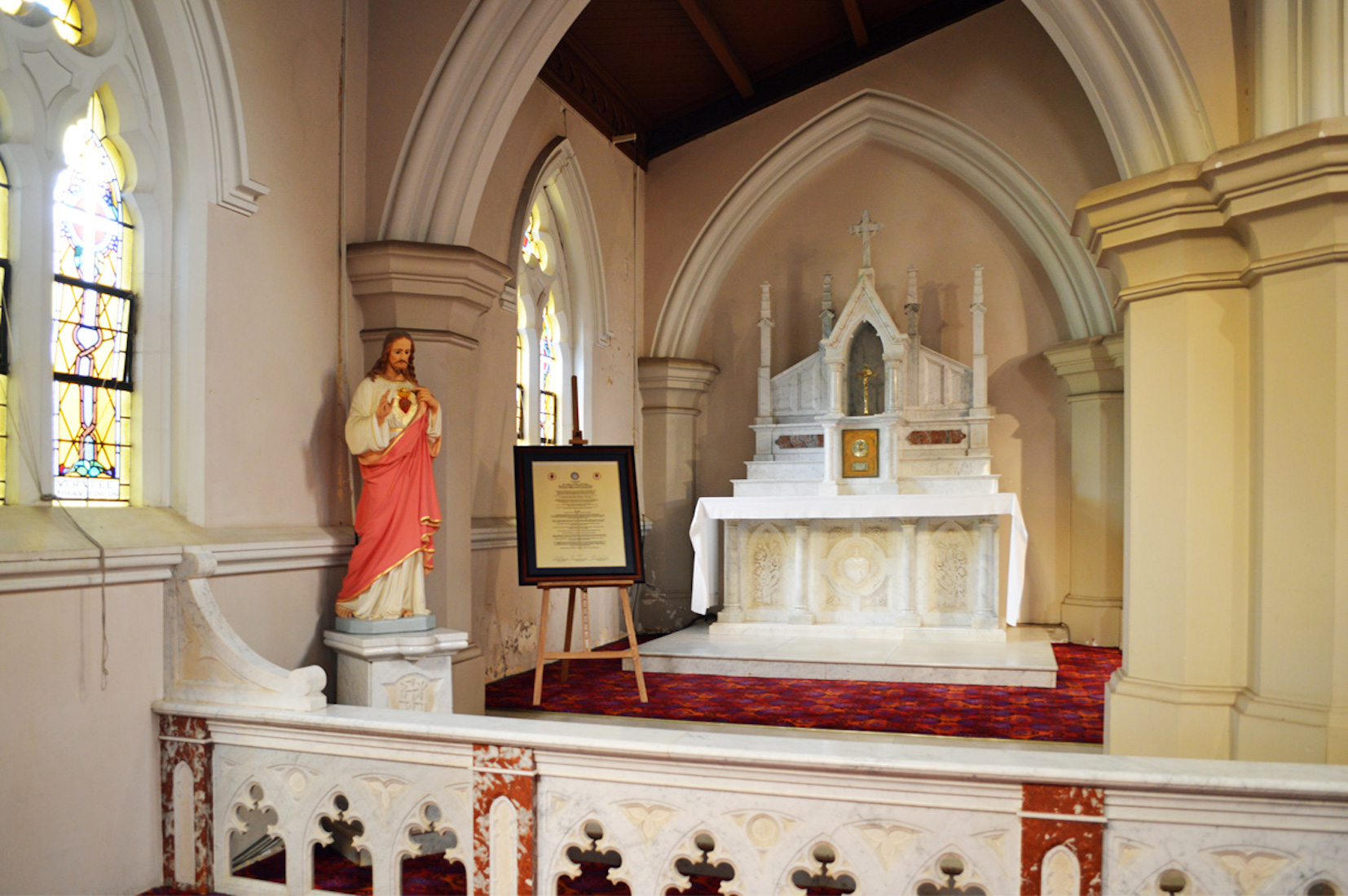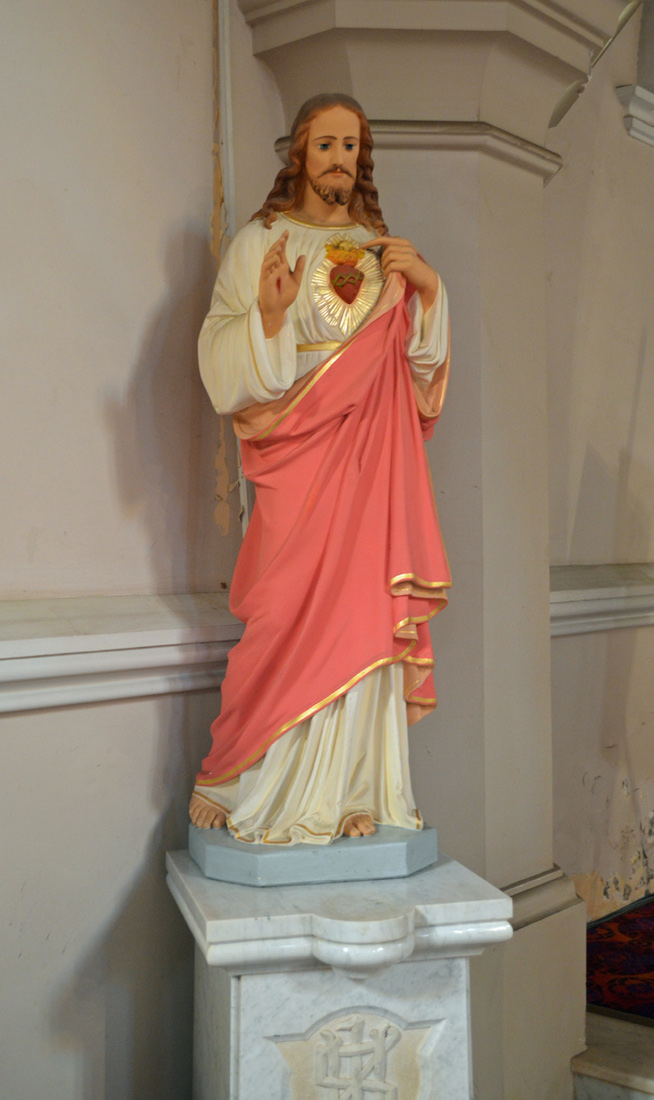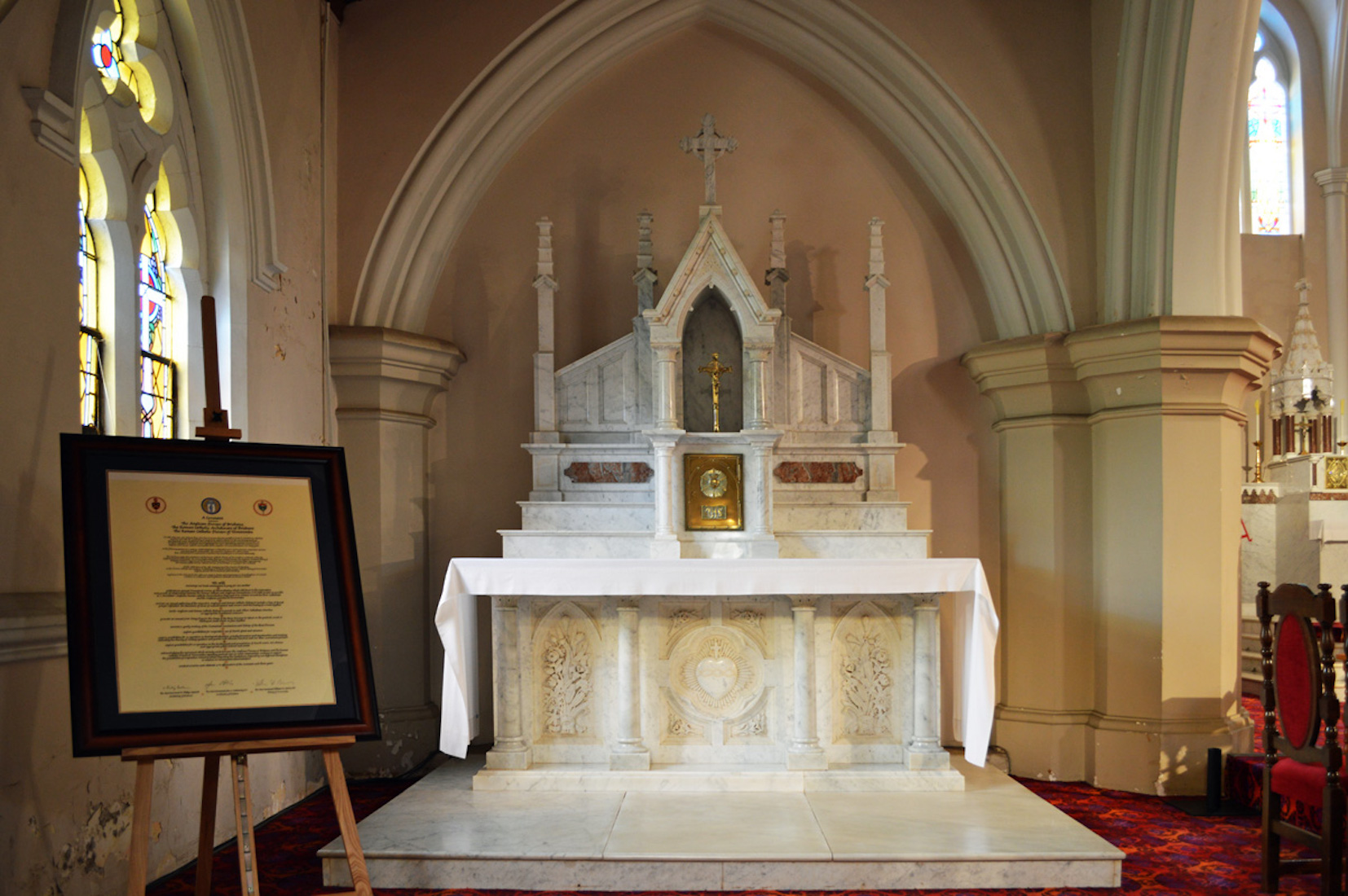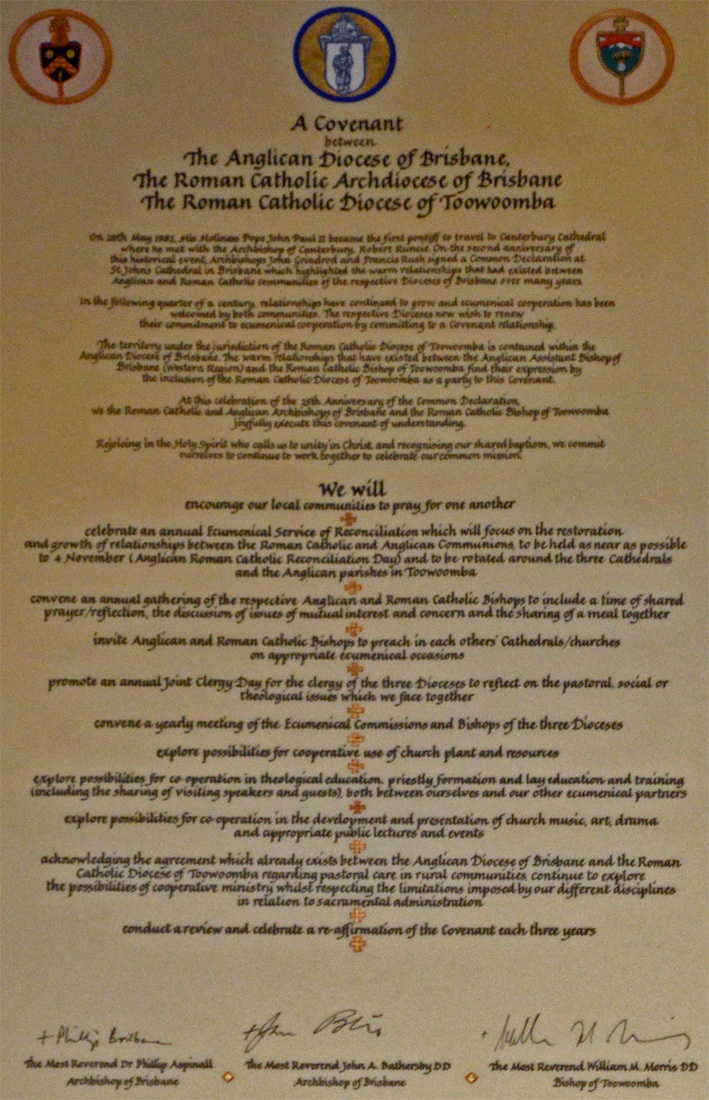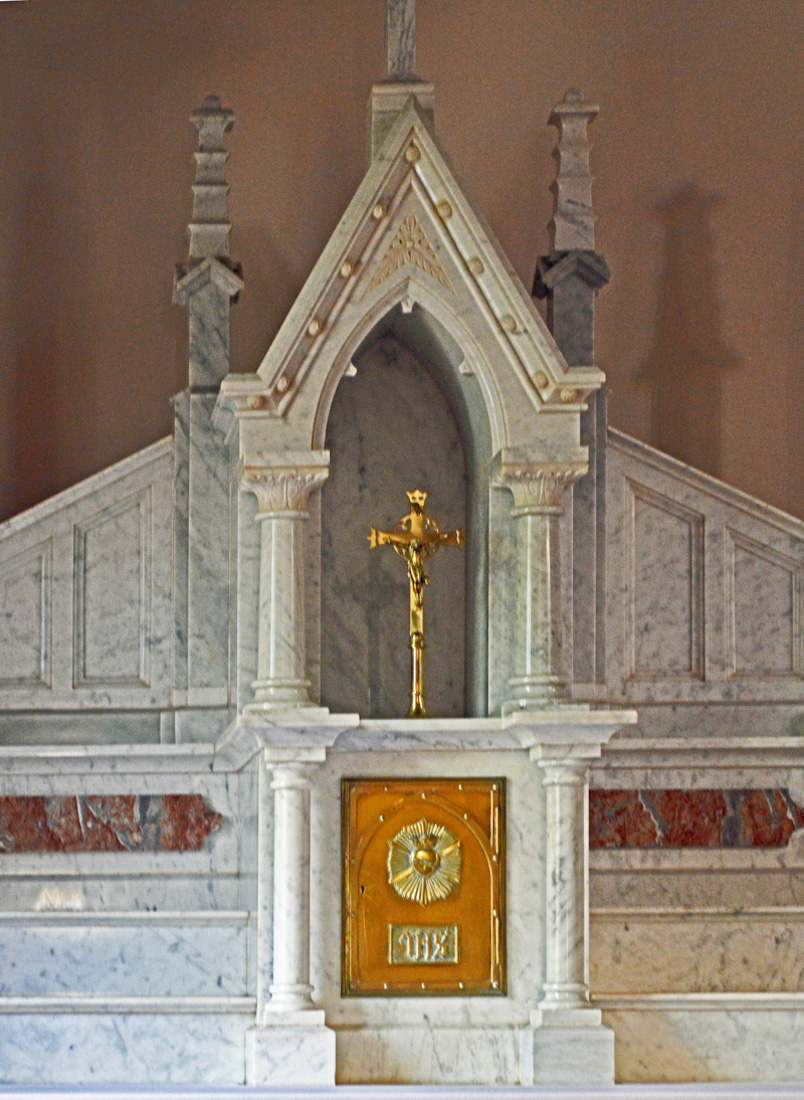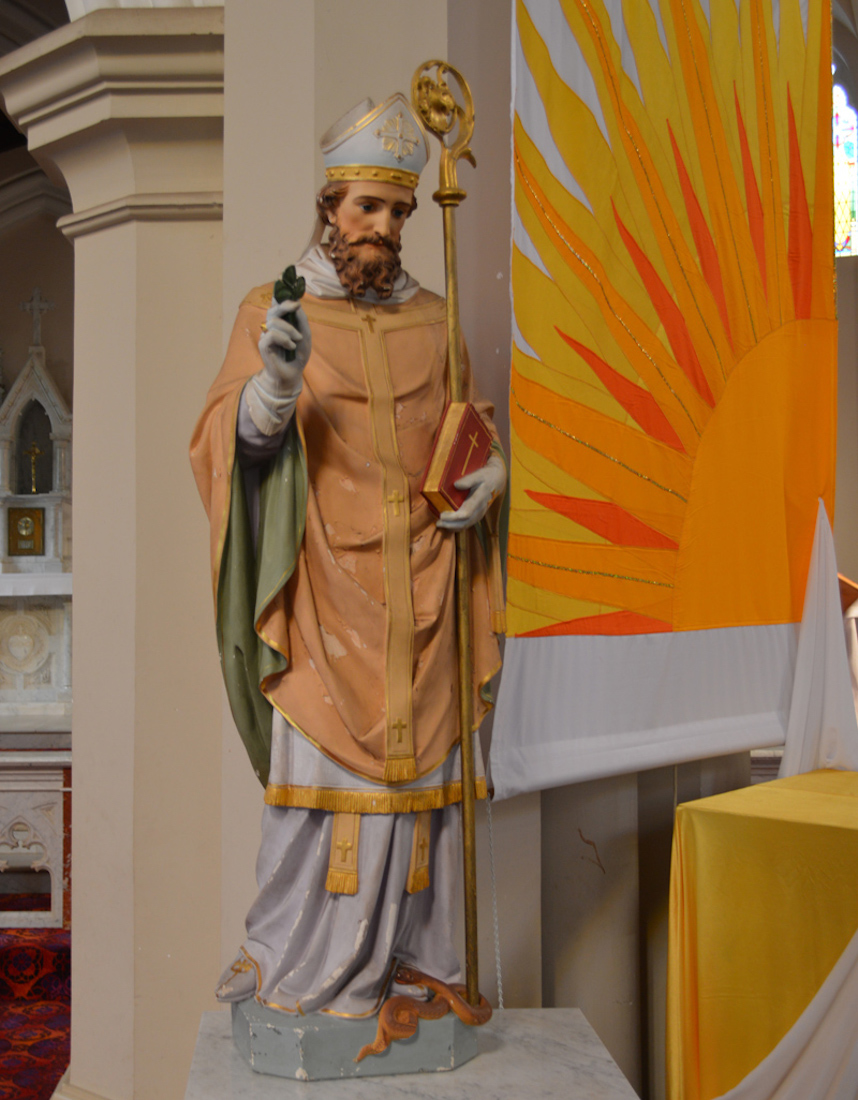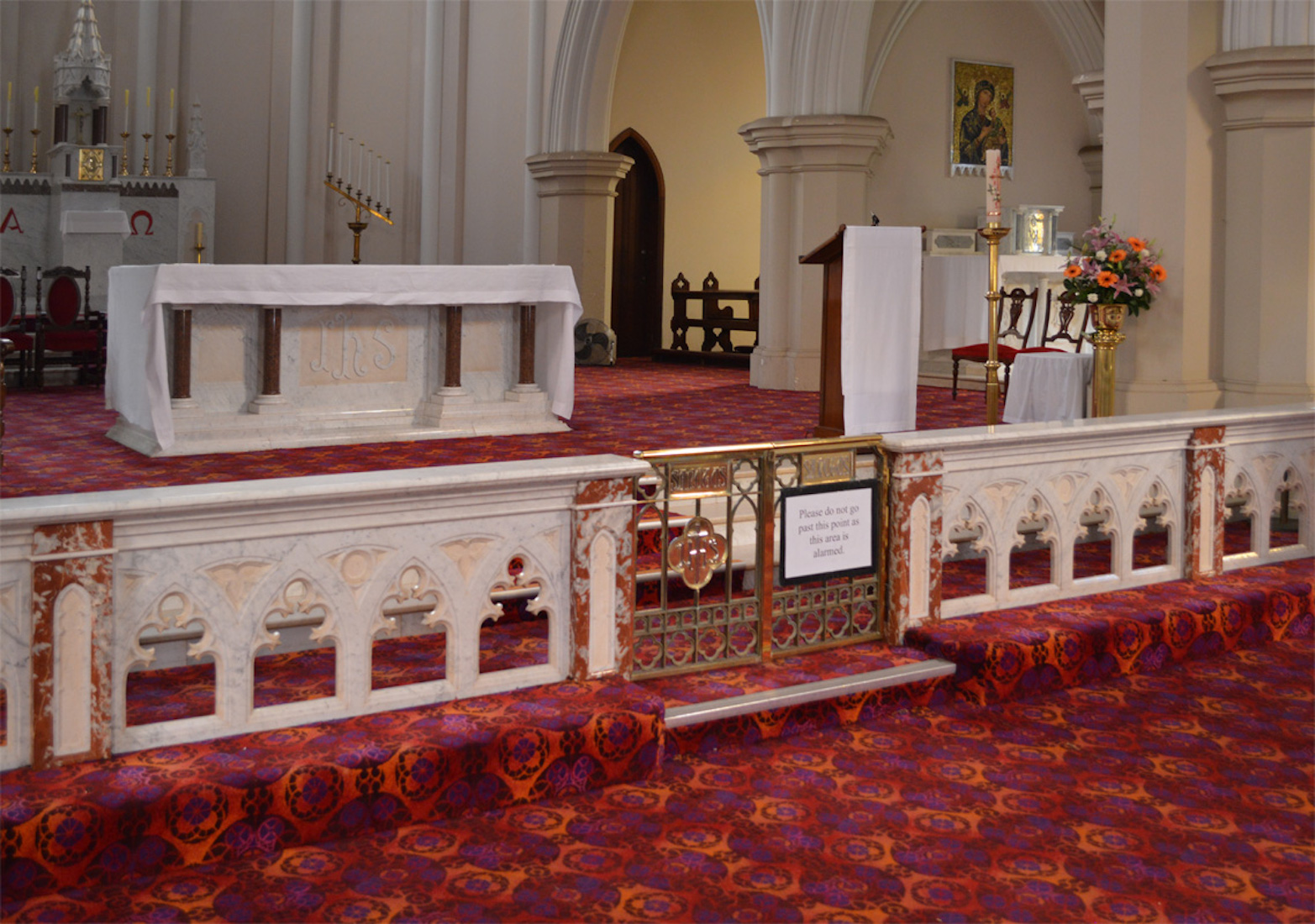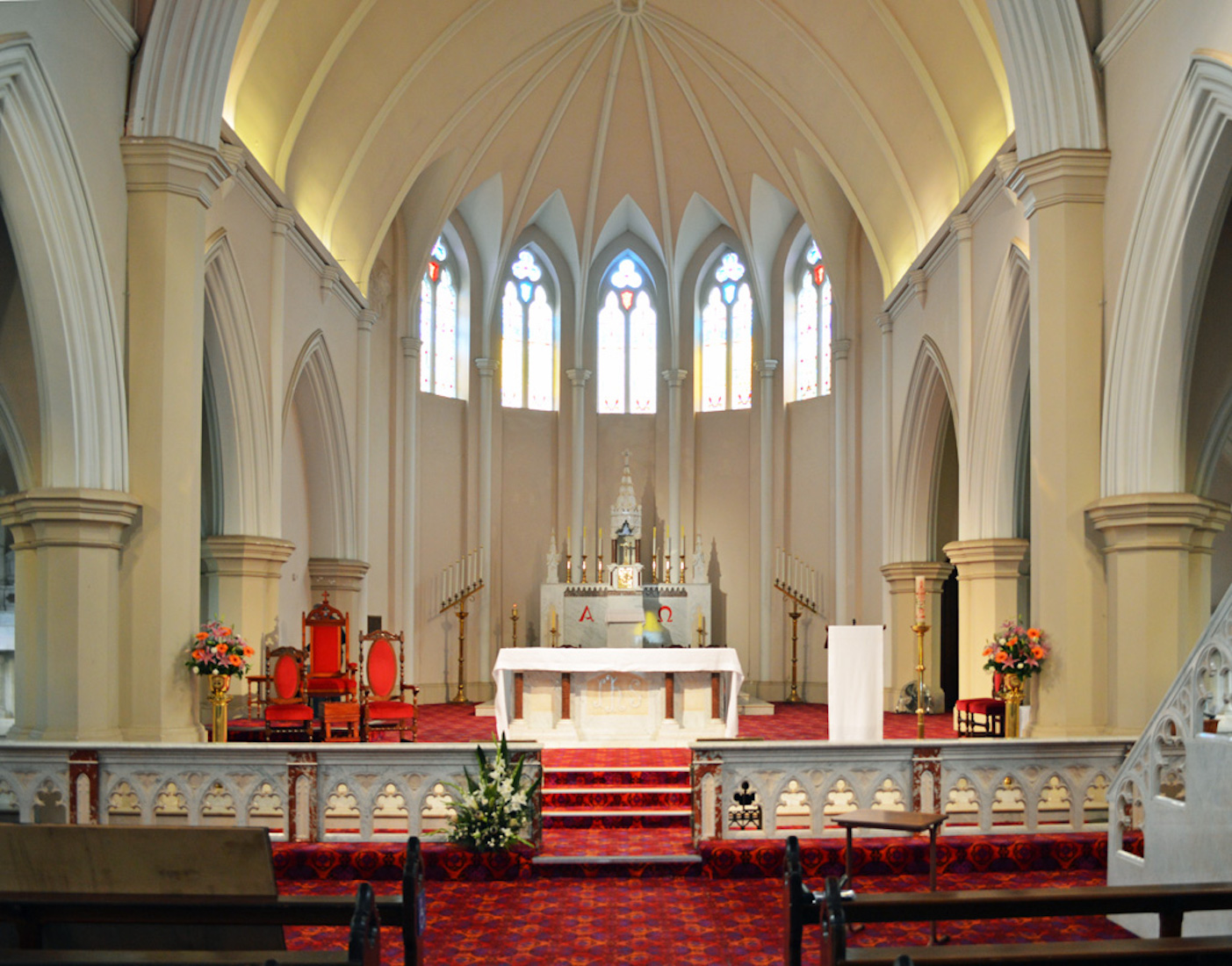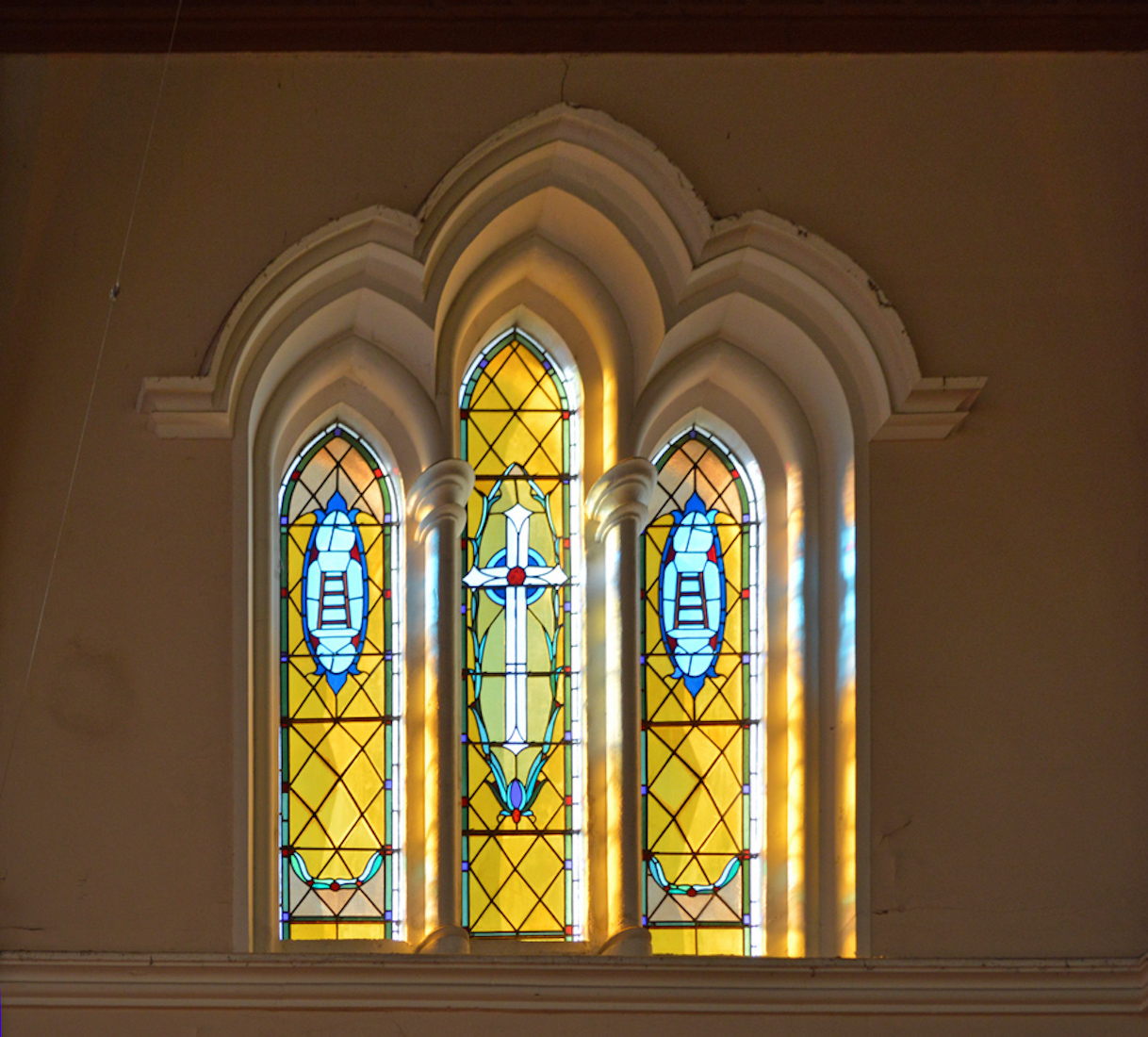
High above, the triple clerestory windows let more light into the Cathedral space. PLAN
22. NORTH NAVE
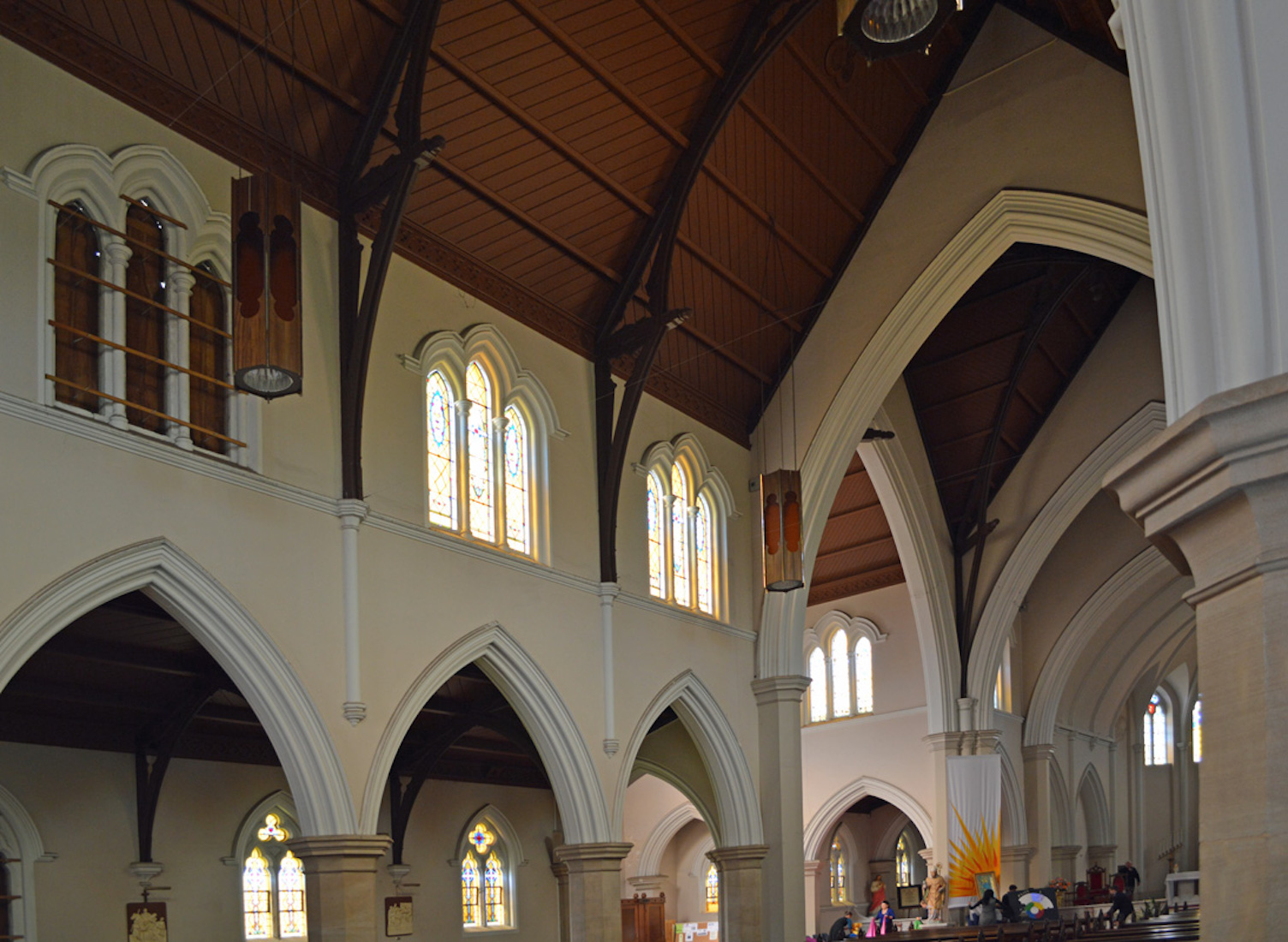
Here is an insight into the structure of the Cathedral. The wide side aisles are separated from the nave by a series of Gothic arches. Larger arches delineate the crossing. We can gauge here the relative sizes of the clerestory and lower windows. Notice too the Stations of the Cross along the nave walls.
23. STATION OF CROSS III
One of the delights of this Cathedral is its beautiful three-dimensional carved Stations of the Cross. These commemorate the last walk of Jesus to the cross, and are used as an aid to devotion, particularly around Easter time. Here we see Jesus falling under the weight of the Cross.
24. STATION OF CROSS VI
This Station shows Veronica washing the face of Jesus. (Saint) Veronica does not appear in the Bible, but is part of Catholic tradition. She used her veil to wipe the face of Jesus, and miraculously an imprint of Christ’s face remained on the veil.
25. STATION OF CROSS IX
In this Station of the Cross, Jesus falls for the third time.
26. STATION DETAIL
I can find no reference to the sculptor of these remarkable scenes ...
27. NORTH NAVE LOOKING WEST
St Joseph holding the young Christ Child, stands at the corner of the crossing of nave and (North) transept.
28. JOSEPH AND CHILD
Joseph is often seen holding lilies – a reference to a legend about him, foretelling the birth of Christ.
29. NORTH TRANSEPT
This view of the North transept was taken shortly after a morning Mass attended by 650 school boys! We notice the large West window, and the confessionals against the far wall. To the right of the doorway is the baptistry with its old hand pump. To the left of the sun banner stands St Patrick, and just behind him is the entrance to the Sacred Heart Chapel. To the right of the sun banner is the altar rail, and on the right the marble pulpit.
30. NORTH TRANSEPT WINDOW
Although large, the North transept window is again a relatively plain leadlight window. The top panel depicts a dove in unusually rapid descent! There is a small circular picture at the top of each central lancet.
31. WINDOW DETAIL
The left (lower) picture shows a cross with cloth wrappings – usually a symbol of the resurrection. The right shows a ladder. This may relate to the Crucifixion, picking up on a theme in the stations of the Cross. Or perhaps there is a reference here to Jacob’s ladder (Gen 28: 10–17)?
32. BAPTISTRY
The baptistry is situated in the North transept, and has a most unusual ‘outback’ design, resembling an old pump by a well. The painting by Jan Williamson shows a new and refreshing image of Mary MacKillop showing the vision Mary had as a young woman. The artist used the words of the hymn, Woman for Today by Michael Henry FMS, as her inspiration. ‘What did you see young Mary, as you rode the plains with windswept hair. Rough bush huts and children, their poverty my despair.’ The painting dates from 2010 with the canonization of Mary MacKillop.
33. SACRED HEART CHAPEL
Just East of the North transept, we come to the Sacred Heart Chapel. Behind the rail there are three items of note: the Sacred Heart statue, a very interesting Covenant statement, and the Sacred Heart altar. Notice the sloping roof line : the roof over the Northern aisle continues on this side of the transept.
34. SACRED HEART
The Sacred Heart is a devotional name used by some Roman Catholics to refer to the physical heart of Jesus Christ as a symbol of Divine love. Devotion to the Sacred Heart in focusing on Christ's heart metaphorically focuses on the emotional and moral life of Jesus and especially His love for humanity. It also stresses the central Christian concept of loving and adoring Jesus. In most depictions, Christ's heart is shown containing wounds to which Christ points, as well as a crown of thorns. This wounded heart is meant to symbolize Christ's pain at the rejection of God's Gospel message of salvation and righteousness by humanity.
35. CHAPEL ALTAR
The Chapel is a peaceful place, with its simple altar. The prominently displayed document at left looks interesting.
36. COVENANT
I was surprised and pleased to discover that the document on display in the Sacred Heart Chapel is in fact a Covenant between the Anglican Diocese of Brisbane, the Roman Catholic Archdiocese of Brisbane and the Roman Catholic Diocese of Toowoomba to pray for one another, to preach in each other’s cathedrals and churches, and generally to work together.
37. CHAPEL REREDOS
The reredos behind the altar in the Sacred Heart Chapel is a simple structure, but I have been unable to find any details about it. The central feature is a gold Crucifix standing in an ornate niche bounded by two round columns and topped with a decorated gable. Below is a gold tabernacle, flanked on each side by horizontal strips of red marble. The tabernacle door bears the inscription IHS (the first letters of the name ‘Jesus’), and a crest of radiating lines from a central heart with a crown.
38. ST PATRICK
Returning to the crossing, we pass a fine statue of St Patrick, Apostle of Ireland and Patron Saint of this Cathedral. Patrick is often shown with his foot crushing a snake. The fact that there are no snakes in Ireland is often attributed to Patrick. Patrick used the shamrock to explain the Trinity, and has been associated with him and the Irish since that time. Patrick was a humble, pious, gentle man, whose love and total devotion to and trust in God should be a shining example to each of us. He feared nothing, not even death, so complete was his trust in God, and of the importance of his mission.
39. TO THE SANCTUARY
Walking past St Patrick, we now approach the focal point of the Cathedral – the sanctuary itself. In the foreground, along the edge of a raised platform, is the altar rail with a central bronze gate. Behind this is the nave altar, and further back the high altar with the Alpha and Omega symbols in red. Also in view are a small lectern, and various candlesticks with candles.


